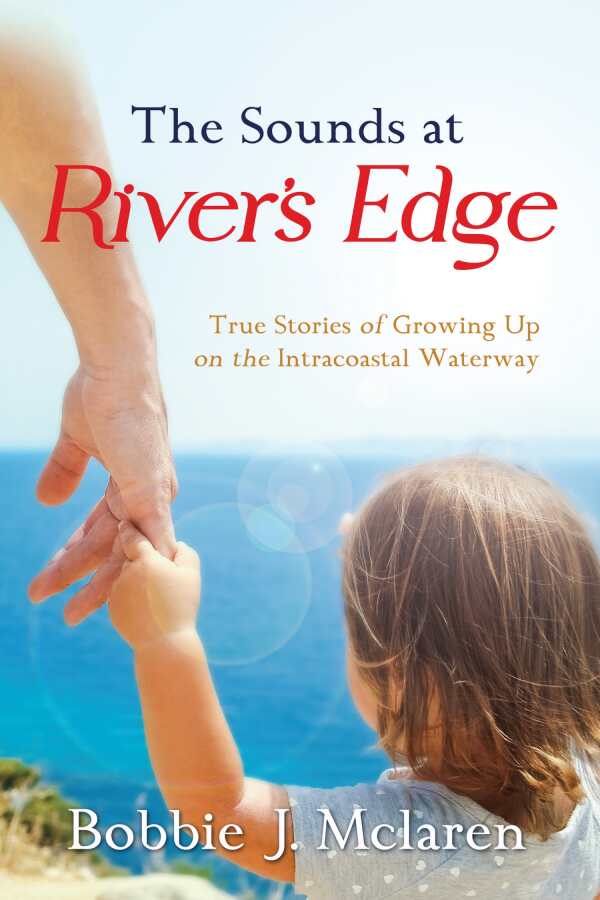The Sounds at River's Edge
True Stories of Growing Up on the Intracoastal Waterway
The Sounds at River’s Edge is a fondly shared, honest memoir that glances back at simpler times that were anything but dull.
The autobiographical essays of Bobbie J. McLaren’s The Sounds at River’s Edge cover an idyllic 1950s childhood in rural Florida with rich details and notes of faith.
Comprising standalone memories, the essays share familiar childhood experiences that are used to reinforce Christian values, embellished by passages from the Bible that relate to their situations. For example, an afternoon of mischief with a slingshot, covered in “Broken Windows,” demonstrates how the truth must not become a casualty to clever loopholes. And in “Keep Your Clothes On,” McLaren observes a robin tending its nest, illustrating its ability to live in the moment as opposed to materialistic human tendencies to stockpile. Other memories include interactions with a man who conducts himself as an earthly representative of God, a sibling rivalry that triggers a satanic side, and relationships with extended family members that appear commonplace on the surface but are rendered holy in retrospect.
Elsewhere, McLaren’s descriptions of nature draw on jarring contrasts between now and then to reveal the devastation faced by coastal communities on account of climate change. The book’s nostalgia for the once-untouched natural world eschews sentimentality to center intimate experiences that future generations may not experience. As a case in point, the sounds of a dog in “Who’s Been Sleeping in My Bed?” turn out to be the barks of a now-endangered species of alligator. A similar moment appears in “Sailing Ships”: once, fish could be seen playing in the vast, gnarled roots of a fallen pine tree that was visible in the clear water, but now, the image of garbage plastered to the shoreline dominates; pollution turned the erstwhile salty fragrance putrid.
The show-don’t-tell approach in chapters like “Runaway Train” recreates the experience of childhood anticipation: McLaren had to collect a certain number of stamps to swap them for a toy from a wish book. Phrases such as ‘“those biscuits would hunt us down” in “Summers on the Farm” capture the youthful impulse to abandon all activity outdoors and follow the fragrance of what’s baking inside.
Despite a longing for the good old days, the recollections also tackle difficult subjects like the practice of religious faith being used to instigate fear or manipulate people. In “No Monsters Allowed,” this habit is shown to be intergenerational; the essay declares that the time has come for a shake-up. It also takes note of previous eras of racial segregation, observing how the deaths of Black and Hispanic people were underreported in the deadly Okeechobee hurricane of 1928—a story passed on from father to daughter in “Eye of the Storm.”
But the enjoyment of the book’s stream-of-consciousness writing style is disrupted by the frequent appearance of grammatical, punctuation, and syntactical errors. Further, “Time in a Bottle” makes damaging suggestions about the LGBTQ+ community, perpetuating the myth that being LGBTQ+ people have made a lifestyle choice and are responsible for an uptick in STIs.
Set in a gorgeous natural landscape and in times when people trusted each other enough to never lock their doors, The Sounds at River’s Edge is a fondly shared, honest memoir that glances back at simpler times that were anything but dull.
Reviewed by
Sriya Narayanan
Disclosure: This article is not an endorsement, but a review. The publisher of this book provided free copies of the book and paid a small fee to have their book reviewed by a professional reviewer. Foreword Reviews and Clarion Reviews make no guarantee that the publisher will receive a positive review. Foreword Magazine, Inc. is disclosing this in accordance with the Federal Trade Commission’s 16 CFR, Part 255.

